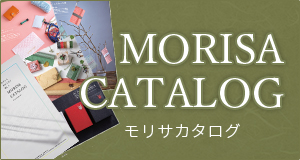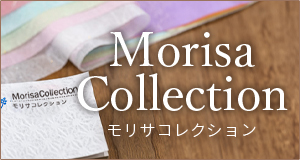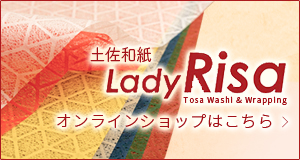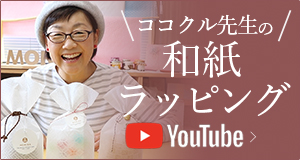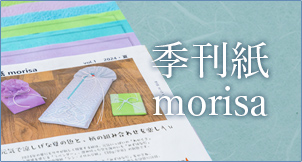MORISA | Tosa Washi
Washi made by water
Morisa’s “Ochimizu-gami” paper, which utilizes traditional Tosa handmade washi techniques.
Tosa Washi is one of the three Yamato papers in Japan and has a history of 1,000 years.
Mechanize handmade techniques and combine them with a variety of processes,
We are an energetic company that takes on the challenge of creating new paper with rich functionality and design.
Morisa’s Japanese paper responds to the spirit of giving something precious as a gift.
Location
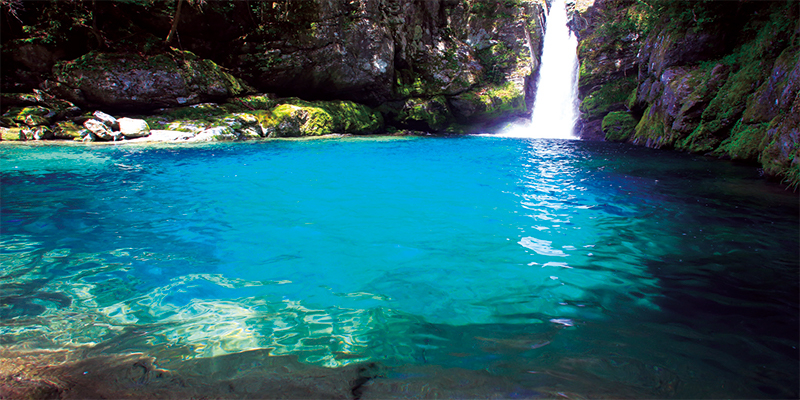
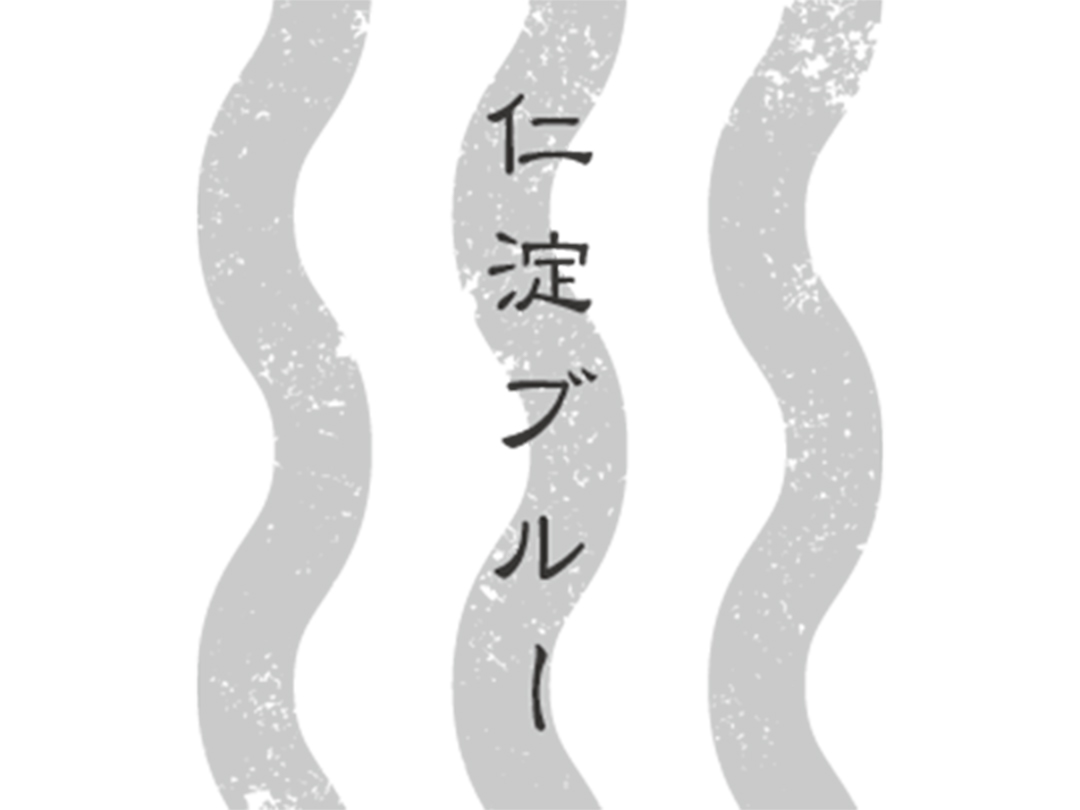
Japan is the second largest country in the world in terms of forest coverage. Among these countries, Takayama Prefecture boasts the highest percentage of forests in Japan at 84%. The fact that there are many forests means that there are many benefits from water, such as rivers and oceans. When forests are healthy, the creatures that live in the rivers and oceans and the bounties of nature are abundant. Kochi Prefecture is proud of its abundance of natural resources.
The Niyodo River is the third largest river in Shikoku, following the Yoshino River and the Shimanto River, and is particularly famous for the clarity of its water, which is the highest in Japan. The blue of the sun’s rays and the sky mixes with the blue of the river to create a mysterious and indescribable color, which has earned the river the name “Niyodo Blue” and is well known to many people. Nurtured by the clear subterranean waters of the Niyodo River, Morisa washi is made using the techniques of Tosa handmade washi.
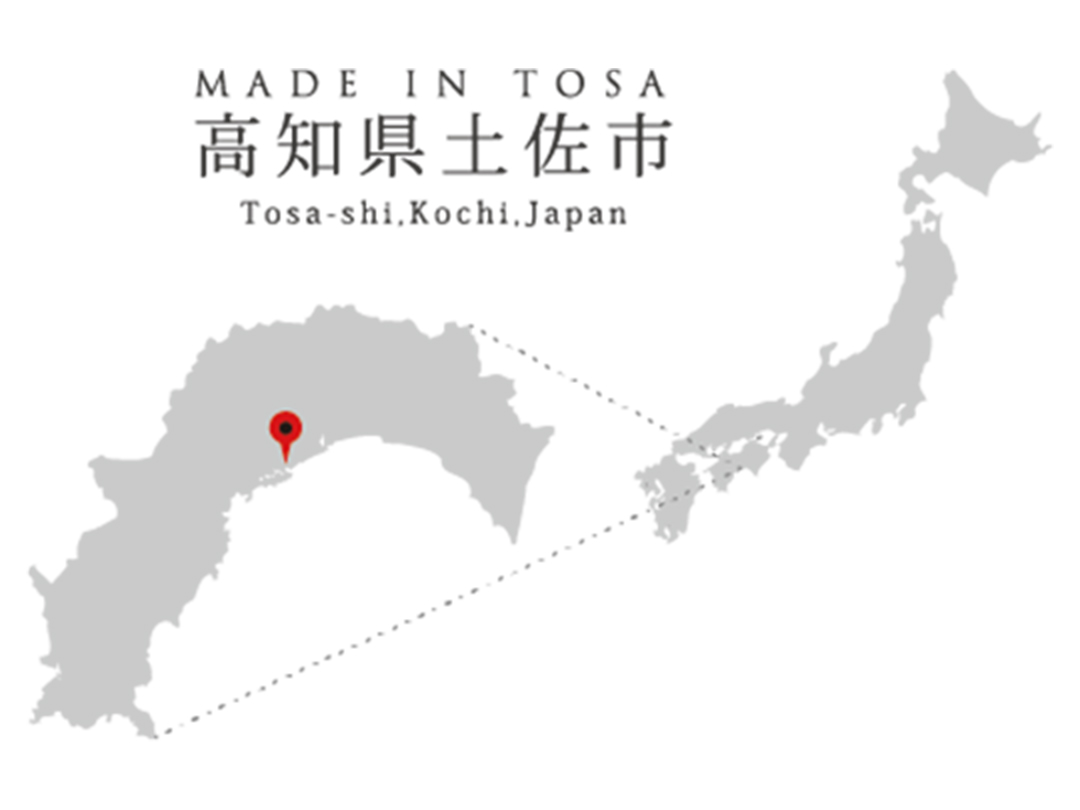
No Raw Materials
Morisa’s Commitment
Kochi Prefecture is known for the high quality of its kozo (paper mulberry) and mitsumata (mitsumata), the raw materials used to make washi. Every year in early winter, Morisa harvests kozo from its own fields and produces a limited amount of kozo washi. The deep forests that nurture the plants used as raw materials, the water resources that are abundant and of optimum quality for papermaking, and a progressive spirit that takes on new challenges have made Tosa washi what it is today. We are also committed to developing washi that can be used in modern life. We are striving to develop washi that can be used in modern life. We use traditional raw materials such as kozo, mitsumata, ganpi, etc., and change the processing and blending to suit the purpose of writing or wrapping, and sometimes use synthetic fibers and other non-natural raw materials.
We have improved our paper to have heat adhesion, water resistance, and adhesiveness, and to be used for new purposes. Morisa’s paper can also be used to convey the “selected taste” and “high quality” of the product it is used to wrap, the producer’s desire to “wrap with care” and “deliver feelings”, and to make the daily lives of those who use the paper more enjoyable, interesting, and beautiful, Morisa’s mission is to make the daily lives of those who use paper more enjoyable, interesting, and beautiful.
No Products
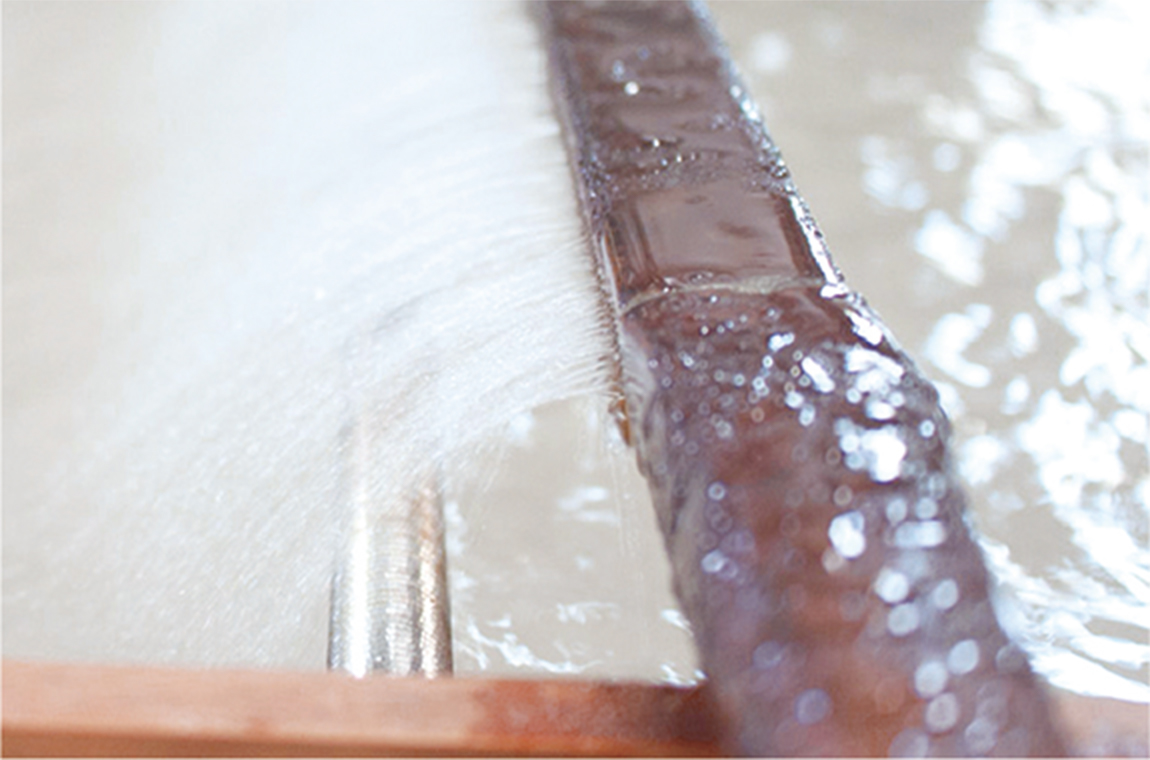
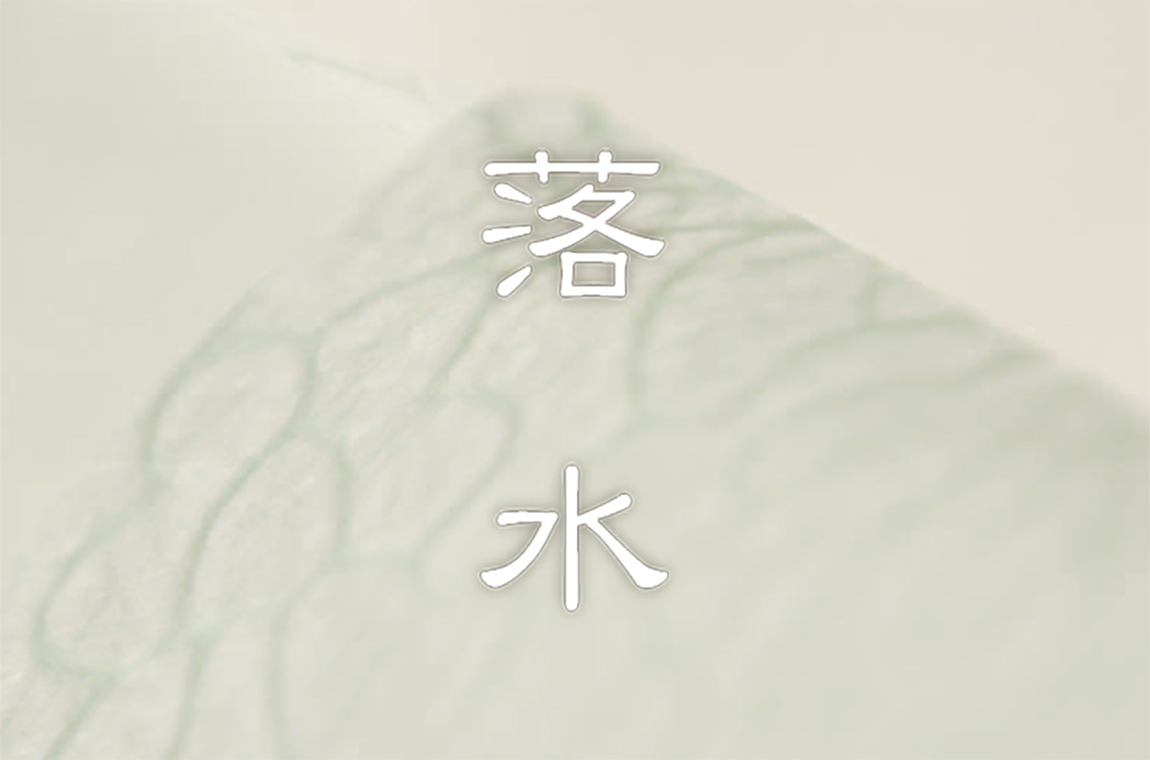
Tosa Washi and Rakusui Paper
Tosa washi is paper made in Kochi Prefecture using traditional methods, and has a long history as seen in the Engishiki of the Heian period (794-1185). During the period of the feudal government, the prefecture produced high-quality paper as “imperial paper” and developed the technique of making the colorful paper known as “Tosa shichiro gami” (seven-color paper). Inheriting this tradition, Tosa washi is still characterized by its thin, beautifully colored papers, such as the “Tosa seven-color paper,” which is often compared to the “feathers of a heat devil.
Morisa makes machine-made paper such as “Usuyoshi” and “Ochimizu-gami” by taking advantage of the skills and water resources that have taken root in this region.
Ochimizu-gami is a type of Japanese paper in which water is dropped onto the surface when thin paper is made to create a pattern. The paper is characterized by its lace-like pattern with holes in the surface. This Rakusui pattern can only be drawn when the paper is drawn at a very slow speed. Similarly, to make the streaks of dragon and cloud swirl beautifully like the auspicious clouds in Buddhist paintings, the paper must be made at a speed of several meters per second, and the intuition of the craftsman is important to add and subtract grams of the right mixture. The method of carefully crafting with wisdom and ingenuity, while using machines, has not changed in the past or in the present.
Directions to our office
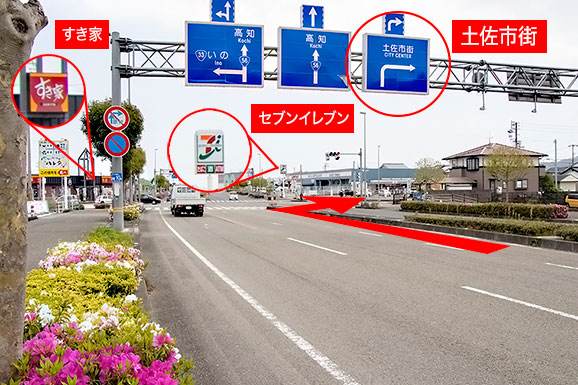
①From the Tosa IC exit on the Kochi Expressway, Go east on Route 56. At the intersection in the photo, turn right toward Tosa City center.
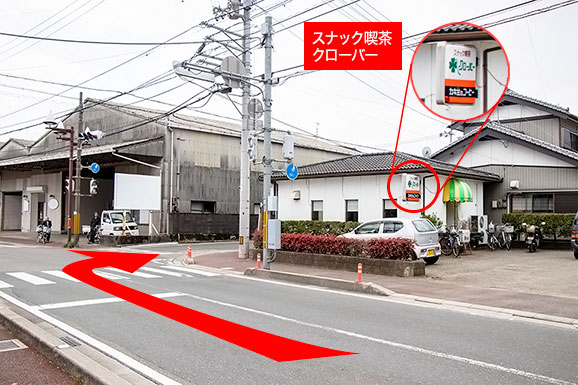
②Snack cafe "Clover" is the landmark. Turn right at the intersection in a westerly direction.
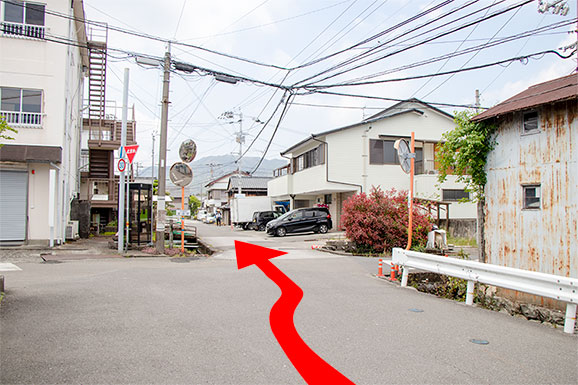
③Continue to follow the road.
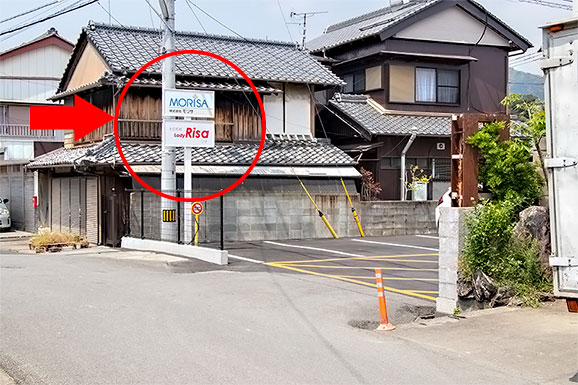
④You will see our sign on the right side of the building.
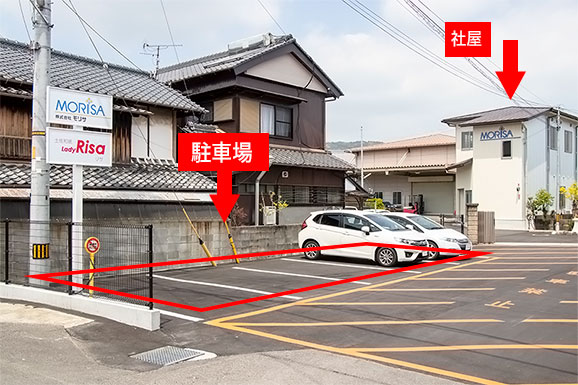
⑤Parking (5 spaces) is available.
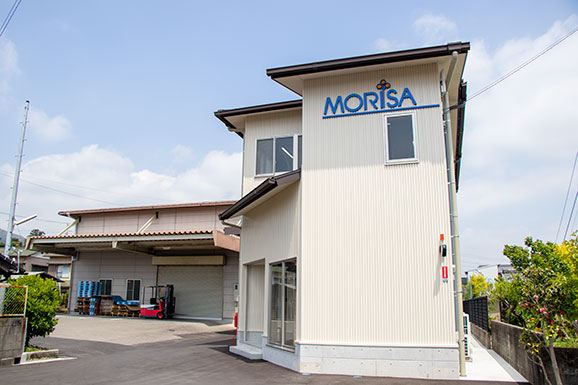
⑥Our company is located at the back of the parking lot.

